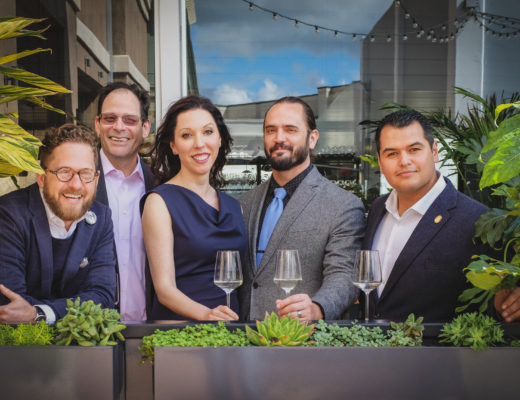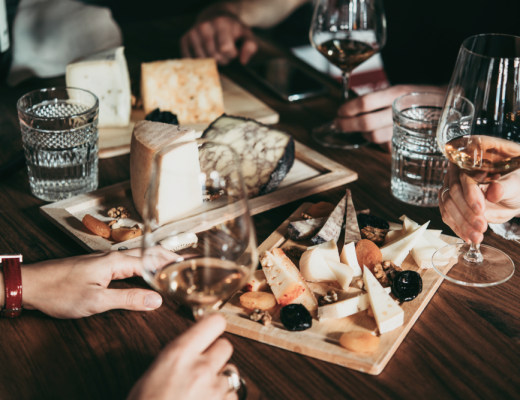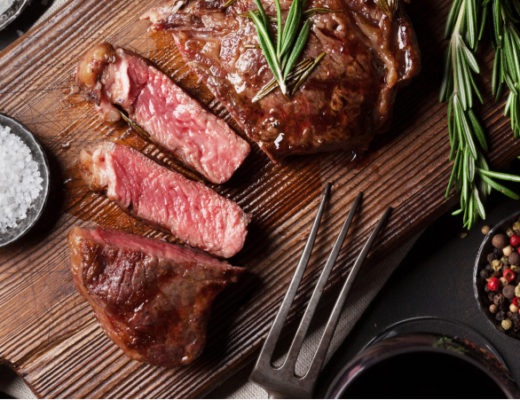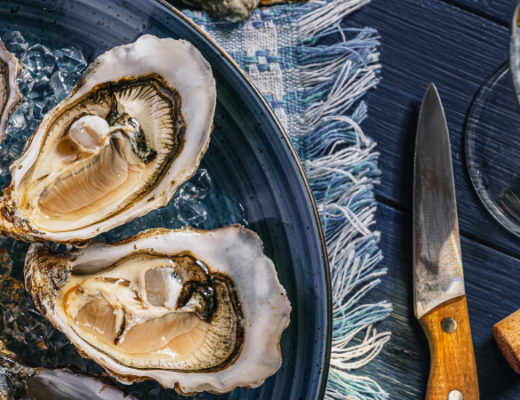It’s no secret that we are partial to Napa Valley Cabernet Sauvignon. Okay, we love it. Scratch that, we live for it. After all, we spend much of the year staring out over the beautiful dark-berried clusters that cling to vines up and down the Valley. And we’ve spent time visiting the cellars of Napa’s greatest Cabernet makers, from the Valley Floor to well above the fog line on the highest peaks of Napa’s mountain appellations.
Though Cabernet Sauvignon is easily recognizable, Napa Valley’s incredible, varied geology and weather make the unique expressions of this grape endless. From bold, firmly structured wines grow on the peaks of mountains, to those cooled by Pacific breezes, there’s a Napa Cabernet for every occasion. We pulled out our maps and our corkscrews, and got to work defining what makes each region unique, with pro-tips to help you find the perfect bottle, every time.
MOUNTAIN CABERNET
Some of our all-time favorite renditions of Napa Cabernet hail from the mountain appellations of Napa including Howell Mountain, Spring Mountain, Atlas Peak, Diamond Mountain, and Mount Veeder. Most vineyards in these AVAs are planted at extremely high elevations, well above the fog that rolls into the valley from the San Francisco Bay. Vines situated above the fog line “enjoy greater exposure to sunlight,” says Master of Wine Vanessa Conlin, “up to two and a half more hours in most cases.”
The higher elevation also gives the vines lower variations in temperature and slightly cooler conditions that allow for more significant flavor development. The excellent water drainage of hillside vineyards promotes density in the wines while maintaining firm tannins and refreshing acidity, making for robust, age-worthy reds.
Tasting Tip from Master of Wine Vanessa Conlin:
“The Howell Mountain AVA, for example, begins at 1,400 ft. in elevation and is known for producing wines full of dark, brooding fruit characteristics, smoky minerality, earthy forest savoriness, and structured tannins.”
Featured Mountain-Based Wineries:
Diamond Creek
Founded in 1968, Diamond Creek was one of the first Napa Valley wineries to emphasize individual terroirs with vineyard-designated Cabernets—and the very first to command $100 per bottle. Every cellar should include at least one of Diamond Creek’s legendary Cabernet expressions: Red Rock Terrace, Gravelly Meadow, and Volcanic Hill.
VALLEY FLOOR CABERNET
It’s not that we’re eavesdropping on conversations in tasting rooms around Napa, but sometimes we overhear concerns from visitors that Valley floor-produced Cabernet should take a back seat to Mountain Cabernet. This, of course, is bonkers.
The “Valley Floor” is generally used to denote a lower elevation vineyard in the appellations of Oak Knoll, Yountville, Oakville, Rutherford, Saint Helena, and Calistoga—and some of the most coveted Napa vineyards are planted in Valley Floor soils including To Kalon, Beckstoffer Dr. Crane, and many others. Next time you drive by Opus One, take a look at the vines planted all around it—those are Valley Floor estate grapes for Mondavi’s Napa’s Grand Cru.
The warmer temperatures of the Valley Floor are mitigated by a cooling layer of fog that filters in from the San Francisco Bay, allowing for full flavor development but at lower sunlight hours.
Tasting Tip from Master of Wine Vanessa Conlin:
“The more fertile soils also provide a riper, fleshier texture to the tannins, and a rounder mouthfeel that can be seductive, even in its youth. The wines of Saint Helena, for example, are known for their more elegant mouthfeel, refined satiny tannins, and notes of black fruit and tobacco.”
Featured Valley Floor Winery:
The 2017 Dakota Shy TEN Cabernet Sauvignon represents the fruit of founder Todd Newman’s labor. It’s a super-classic Napa Valley Cabernet—from vineyards planted in several locations across the valley floor, it showcases the richness that exists across the Valley Floor AVAs. Boasting an opaque dark purple hue, with blackberries, cassis, violets, and cedar notes on the nose, it’s a beautiful example of what they refer to as “humble luxury” at Dakota Shy: A $95 Cabernet that belongs alongside wines at two and three times the price.
OAKVILLE CABERNET
We pinch ourselves everytime we pass through Oakville. Stopping off for espressos at the Oakville Grocery, perhaps popping into the 1881 Napa Wine History Museum, we know we’re on hallowed ground. Located in the heart of the Napa Valley, the Oakville AVA is home to some of the most famous wineries like Robert Mondavi, Opus One, Screaming Eagle, and some of the most coveted vineyards like Beckstoffer To Kalon and Tench.
Tasting Tip from Master of Wine Vanessa Conlin:
“The soils are alluvial, allowing for excellent drainage and ample nutrition, providing density and plush textures to the finished wines. Beautiful perfumed notes and a subtle mintiness are hallmarks of the appellation.”
Featured Oakville Winery:
A decade ago, Robert Parker wrote, “I can’t recommend this up-and-coming producer’s wines highly enough.” Five years after that, he said, “I continue to be blown away by the wines from Russell Bevan.” Bevan’s got seven 100-pointers from Wine Advocate, another couple from Jeb Dunnuck, and his wines keep getting better. Bevan sources grapes from Tench, Saunders, Calixtro, and Harbison—all prime Oakville sites, some favored by Nickel & Nickel and Addax.
PRITCHARD HILL CABERNET
Pritchard Hill refers to the famous boulder festooned hill east of Oakville—it is not an official AVA. and it may not ever become one. However, it is home to some of the most prestigious wineries, including Continuum, Ovid, and Chappellet.
Tasting Tip from Master of Wine Vanessa Conlin:
“The vines get greater exposure to sunlight and excellent drainage at a higher elevation than the valley floor, as in the mountain appellations, leading to riper blue fruit flavors and excellent density in the wines.”
Featured Pritchard Hill Winery:
Chappellet
Chappellet planted the first flag on Pritchard Hill. In the half-century since Donn and Molly Chappellet first settled there, luminaries like the Mondavi Family have flocked to this exceptional red-tinged terroir in eastern Napa Valley. Winemakers like Andy Erickson and Philippe Melka have forged wines from these singular soils, which are now famous for bottles that fetch $250 and much more. “Meanwhile, new neighbors like Nine Suns, Brand and Colgin want to stake a claim on Pritchard Hill, creating spectacular wines to be sure, but Chappellet’s Cabernets showcase the same iconic quality—and they do it at a fraction of the price.”
RUTHERFORD CABERNET
Located just north of Oakville and at the widest point in the Napa Valley, this appellation was home to some of the historic wineries that put Napa on the world’s wine map, like Inglenook and Beaulieu Vineyard. The wines possess a fine-grained tannin coined the “Rutherford Dust” by the late, great, revered winemaker André Tchelistcheff—it’s the only kind of dust you absolutely want in your wine. But don’t take it too literally. The reality is there is a distinct kind of earthy mineral component, and it lends structural brilliance to Cabernets from some of the most famous Rutherford makers including Staglin Family Wines, Dana Estates, and Caymus.
Tasting Tip from Master of Wine Vanessa Conlin:
The wines can be earthy with notable cocoa notes, especially from vineyards nestled at the base of the Mayacamas Mountains, like the Helms Vineyard of Dana Estates.
Featured Rutherford Wineries:
When it comes to emblematic pioneers in the Napa Valley, Frog’s Leap Winery sits alongside Robert Mondavi and Stag’s Leap Wine Cellars. In 1995, the winery officially took up residence in Rutherford, purchasing their now-iconic Red Barn and its 40 acres of vineyard land. Just over a decade later, they acquired the Rossi Vineyard, a 52-acre parcel on the Rutherford Bench that was an essential source for Charles Krug and Robert Mondavi in the 50s and 60s. Always dry-farmed, always organic, this Cabernet sticks to the protocols that have made Frog’s Leap an outlier since its inception.
Round Pond
Antonio Galloni calls the Round Pond lineup “exceptionally well-priced by Napa Valley standards.” Their terroir and talent explain how they outperform their price point to compete with some of the most famous names in Napa. The estate sits at the Rutherford Crossroads between Beckstoffer’s George III Vineyard and Caymus. The grapes have been guided to greatness by Thomas Rivers Brown, perhaps the most in-demand winemaker in the Valley.
Staglin Family
The Staglins family came to Napa in the late 1970s, receiving guidance from Bill Harlan on what to plant. Harlan is after all one of the Valley’s leading experts, and co- owner of Meadowood, founder of the uber-private six-digit-buy-in member’s only club The Napa Valley Reserve, and also proprietor of world-famous Harlan and BOND wines. The Staglins had purchased their Rutherford estate (a former Beaulieu Vineyard property) in 1985 and after overhauling and replanting, they immediately began to give back by supplying a generation of wine lovers with deeply profound age-worthy Napa Cabernet.
Thomas Rivers Brown, the South Carolina native, who has amassed a trophy room of top-scoring wines, including so many perfect 100-point scores that he’s lost count, was invited to join the Schrader team in 2000. Just two years later, Brown would craft his first 100-point wine ever. Today, they have amassed an astounding 30 perfect scores. The source for their Rutherford grapes is none other than Beckstoffer Georges III Vineyard, first planted in the 1800s. Schrader farms a portion that was once under the Napa River until the Army Corps of Engineers shifted the banks for flood prevention. This hallowed ground is rich in well-draining river rock deposits and is partly responsible for the vine vigor that results in Schrader’s perfect-structured Cabernets.
Inglenook
In 2011, Francis Ford Coppola made good on a long promise: to acquire the trademark giving him the right to rename his Rubicon Estate after its original name—Inglenook, the winery founded in 1879 by Gustav Niebaum. “Inglenook’s wines played a prominent role in defining Napa Valley as one of the great wine regions of the world,” writes Wine Spectator. Organically-farmed vines planted on their 235-acre Rutherford estate by Niebaum are still alive and supplying fruit. French-born Philippe Bascaules (Chateau Margaux) and Chris Phelps (Ad Vivum Cellars, formerly of Dominus) work in tandem to produce elegant, age-worthy Napa Cabernets.
CLASSIC/ICON CABERNETS
Classic or Iconic wines of Napa Valley are those that have stood the test of time. It doesn’t matter the size of the production or the location within the Valley; these wines are the names that come to mind when consumers around the world think of Napa—those that can cellar and develop beautiful complexities over time.
The wines can range in style, from tannic and reserved to plush and opulent, but are the names that consumers from around the world associate with the quality of wines from Napa, like Opus One, Harlan, Silver Oak, and Larkmead. Despite Napa’s comparatively young vines and estates—other world-famous growing regions like Bordeaux and Tuscany have been handed down through many generations over centuries—the quality of wines produced, and the relative speed with which many wineries have cemented their status on the global stage, is impressive.
Featured Classic/Icon Wines:
Since its first vintage in 1979, Opus One—initially conceived by Baron Philippe de Rothschild (of Bordeaux First Growth Mouton Rothschild) and Robert Mondavi—has become the red wine that represents California to the world. Its Left Bank-style Bordeaux blend is one of the most coveted, envied, and emulated wines on the planet. Robert Parker calls it not only “one of the great wines of Napa,” but “the pinnacle of French viticultural knowledge combined with that of California and Napa’s Shangri La-like microclimate.”
Schrader – see above.
In Napa Valley, magnificent wines are many, but icons are few—and Shafer is an icon. It’s a steakhouse staple that not only delights red wine lovers from coast to coast but has taken home Wine Spectator’s Wine of the Year title and been served at the White House. Founder John Shafer and his son Doug began re-working the amphitheater of vines that would eventually grow their Hillside Select Cabernet—a site that is perennially ranked as among the best in the world, alongside such names as Château Latour and Screaming Eagle.
Insignia’s angular Old World structure has seduced international collectors and critics since the late California pioneer Joseph Phelps debuted the wine in 1974. Since that offering, Robert Parker has shouted praise from the rooftops, declaring it to be “one of the world’s finest Cabernet Sauvignon-dominated blends.” Sourced mainly from the Las Rocas Vineyard in Stags Leap District with select parcels from south Napa Valley up to the Home Ranch Vineyard complete the wine, which is aged in 100% new French oak barrels.
Once a year, each February, for three decades, Cabernet fans have been camping out, sometimes for two nights, to lay claim to their share of Silver Oak’s Napa Cabernet. Founded by Ray Twomey Duncan in 1972, Silver Oak is as classic and iconic, if not quintessential Napa as it gets—and the most recognized American wine in the world. The Duncans continue to debut new vintages of Silver Oak four and half years from each harvest. The wine is treated to their famous aging regimen—two years in American oak and another 20 months in bottle, which produces an infinitely drinkable Cabernet from the day it becomes available.





